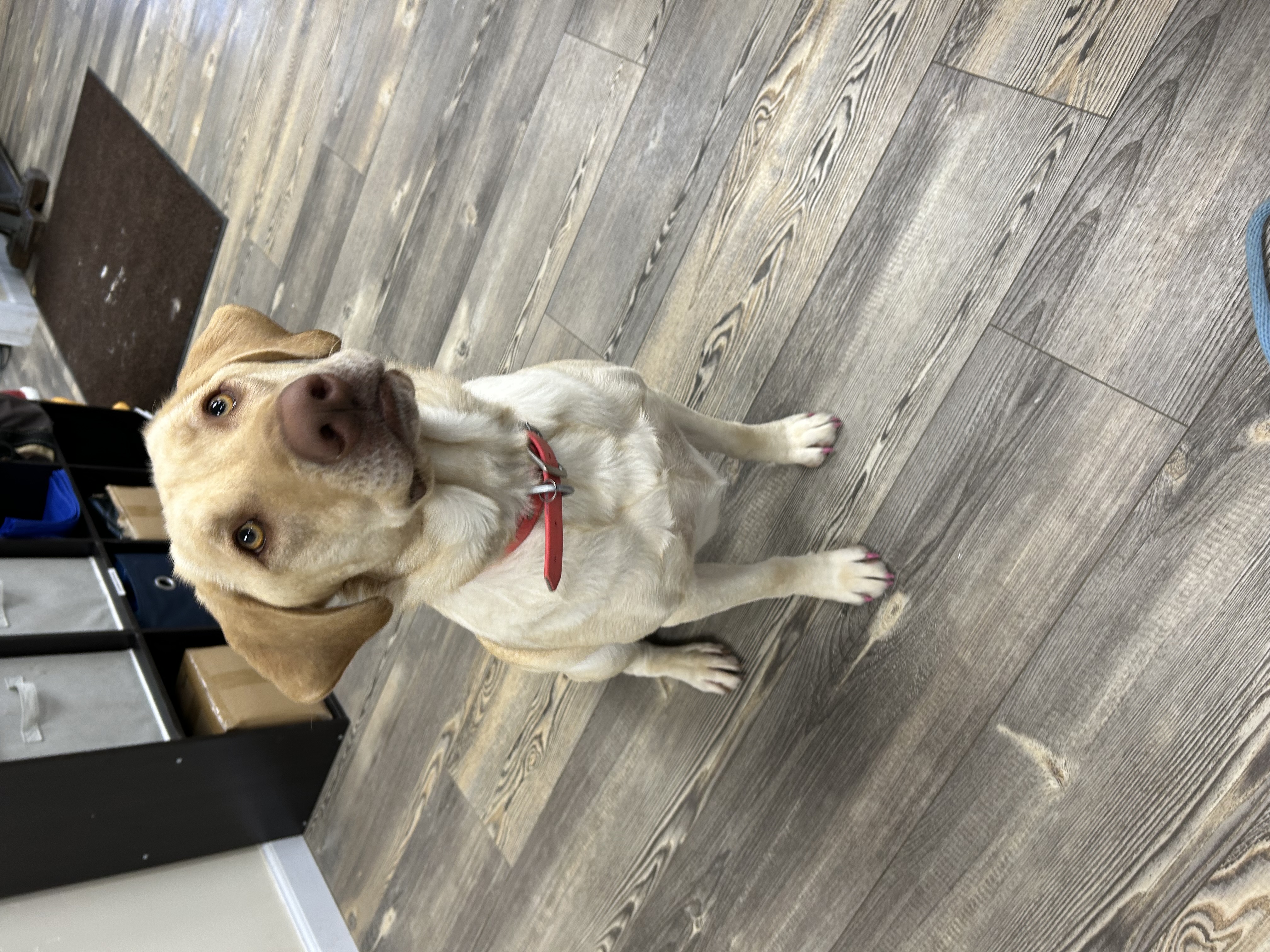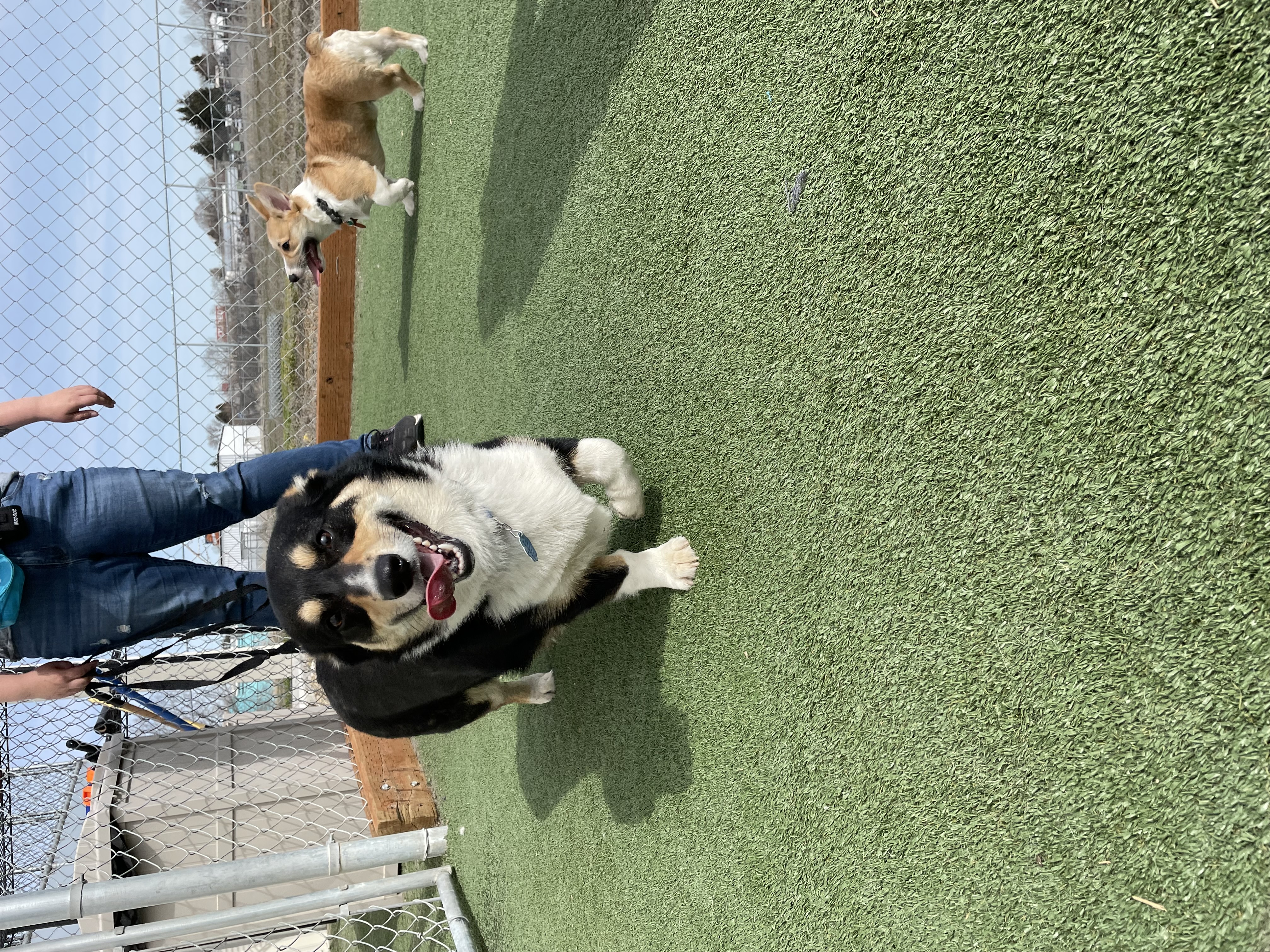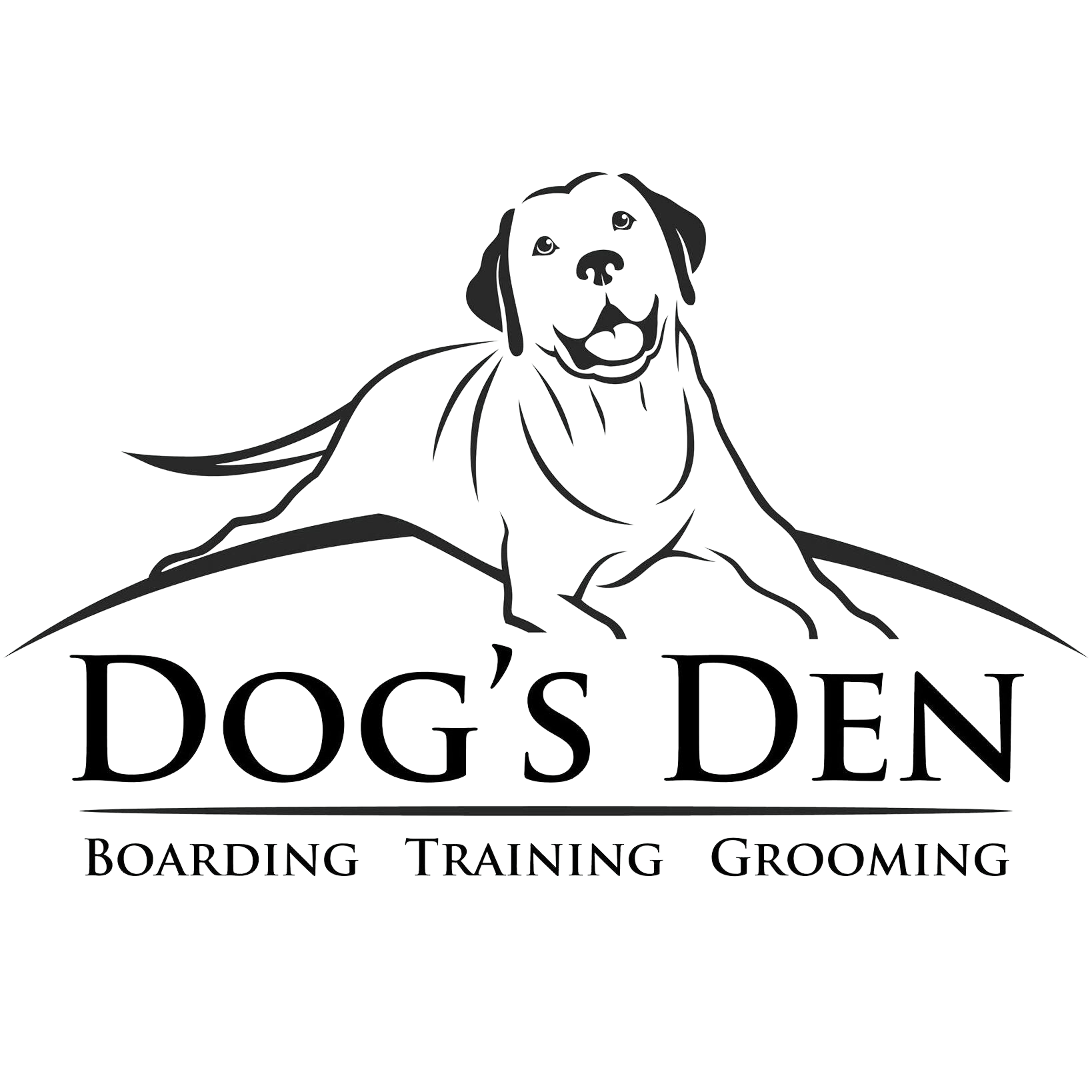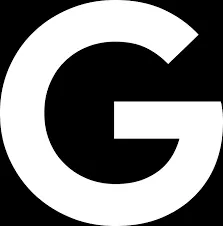
FAQ

What do I bring for my dog?
You can bring as much or as little as you'd like! We provide every dog with a Kuranda bed and a blanket, but you are more than welcome to bring their bed or blanket from home, too! Due to safety concerns we don't leave bones (synthetic, or natural) with dogs in their kennels unsupervised. If you'd like your dog to be fed food from home, please be sure to bring enough for the length of their stay.
Why is the gate always closed?
Even though the gate is closed, we are open! When we built Dog's Den with easy access to Highway 30, safety was of utmost concern. Our beautiful entry gate is there to have an extra layer of security in the unlikely event a dog were to get loose from their owner on the way into or out of the building.
When you arrive for your reservation, simply press the call box button. That button calls the front desk and we will let you in from there!
What if my dog has medication?
When you register your dog's information in our booking system, Paw Partner, you can put in all the information about their medication. The more detailed, the better. We're happy to make sure your dog gets any and all medication they require during their stay including pill administration or insulin shots for diabetic dogs. Please be aware that we cannot care for dogs with serious wounds or drain tubes. Please see your veterinarian for assistance with dogs who require 24/7 medical attention.
Can I bring my dog's own food?
Of course! All we ask is that you bring enough to cover their length of stay. Dog's who do not bring food from home enjoy either Iams or Kirkland brand food.
How old does my dog need to be in order to visit?
For the health and safety of all dogs in our facility, your dog needs to be current on all of their shots to board, join daycare, or be groomed at Dog's Den. This includes Rabies, DHLPP (Distemper Parvo Series), and Bordetella. Depending on the vet and the individual puppy, puppies generally have all of their vaccination series completed by 16 weeks of age. Please consult with your vet on your puppy's vaccination timeline.
My dog isn't spayed or neutered. Is that a problem?
Not at all! Just let us know if your dog is intact so we can make a note in our system. The only part of their stay that will be affected is which play groups they enjoy! We never want to put intact dogs in the same play group. We love puppies, just not surprise puppies!
What should I leave at home?
Your dog's chew toys from home. Bones, squeaker toys, ropes, etc. We do not want to see your dog's toys accidentally mixed in with the toys here at the facility when everything is removed from kennels for daily cleaning.
Your dog's bowls from home. We provide bowls for your dog's food and water. Every bowl is cleaned daily. Keep your bowls at home so we do not accidentally mix your bowls in with ours during cleaning and have it get lost in the mountain of bowls!
Your dog's leash. Please bring your dog into the facility on their leash. We will transfer your dog to one of our facility slip leads so you can keep your leash with you.
Does my dog require all the vaccinations if I'm just getting them groomed?
Yes. Our top priority is to maintain a safe environment for your dog and one of the highest priorities in maintaining a safe environment is disease prevention. Because Dog's Den is shared by our boarding, daycare, and grooming departments, all of the dogs in our care for any services may share spaces. A boarding dog may come up to the grooming room for an exit bath the day before they go home and then go back to their kennel.
We will not be able to schedule an appointment with your dog until we have all of their vaccination records on file. Please help us keep your dogs happy and healthy and make sure your dogs are vaccinated before requesting an appointment.
What are the vaccinations for?
Rabies: Rabies is a fatal neurological disease. Your vet will always administer a rabies vaccination as it is required by most local laws for dogs to be vaccinated against rabies. In general, vets will administer the rabies vaccination in puppies at 16 weeks of age. Some types of rabies vaccinations must be given yearly, and some types can be given every 3 years. Talk to your veterinarian about what is best for your dog. You can find more detailed information about rabies here.
DHPP: DHPP stands for Distemper, Hepatitis, Parainfluenza, and Parvovirus. Your vet will always administer this vaccination in your dog. This is a series of vaccinations required in puppies and then it can be given yearly or every 3 years depending on the type of vaccine. Talk to your veterinarian about what is best for your dog. You can find more detailed information about DHPP here.
Bordetella: The slang term for Bordetella is “kennel cough”. Bordetella is an upper respiratory infection that is highly contagious in dogs. Think of it as if you take your child to school or daycare, they are eventually going to come home with a cold or the flu. The upper respiratory infection known as “kennel cough” can be caused by various contagions viral or bacterial. We require the vaccination as a safeguard and have sanitation protocols to assist in prevention. You may have to specifically ask your veterinarian to give this vaccine, as it is not considered a core vaccination. You can find additional information on "Kennel Cough" here.

Read Our Newest Blogs

The Leash – What is it really?
“The leash is not something to be used to force your dog to submit or to issue harsh corrections. It can be used for correction, but we must correct properly!”
When you think about a dog being on a leash, there are several images that come to mind. Usually, the image has the dog dragging their owner down the sidewalk, straining on their flat collar or harness with their owner just trying to hang on while the dog tries to get to a squirrel or another dog. Anxiety and emotions run high as two dogs choke themselves trying to get to each other. This means your dog doesn’t know what their leash is!

To understand how a leash works we must understand what it is not. The leash is not a way to restrain your dog from running off nor is it for harsh discipline. The leash is not something to be used to force your dog to submit or to issue harsh corrections. It can be used for correction, but we must correct properly!
So, if the leash isn’t meant for harsh correction and it’s not for restraining your dog, what is its purpose? In my last article I discussed the importance of communication and that’s exactly what the leash is for. While we’re on a leash, the leash is our way of talking to our dog and their way of talking back to us about what we encounter in the world. Our dogs can learn to be off leash, but it helps for them to learn on leash, first! Think of your young kids. Do you let them wander off in front of you when they’re first learning how to act in public? No, you hold their hand so you can guide them through things life throws at them. Eventually you let their hand go, but not at the beginning.
Dogs don’t leave their litters knowing about a leash, so we must teach them. To do that we first have to overcome our own habits of wanting the leash to be tight all the time. Relax! You’re not going to outpower your dogs in sheer strength. You’ll just hurt yourself or your dog if you try. Having the leash so tight gives you the illusion of control, but it just makes you and your dog both frustrated!
Instead, use a technique called calibration to teach our dogs about the leash. Let your dog get interested in something and walk ahead of you. As soon as the leash gets tight, do three things at the same time. Walk backwards in the opposite direction from your dog, say their name, and nudge gently, but crisply, several times until your dog turns towards you. The second your dog turns towards you, pour on the praise! Offer a treat as well if you’d like! Repeat many times every day. Practice in a controlled and contained environment. Remember, the nudges are light, and they are not drags on the leash.
This process will teach your dog that when they feel that pressure on their collar, to turn and look at you. It’s the dog version of when a person taps you on the shoulder, you turn and look at the person. Calibration is a fantastic relationship building tool that is easy for every dog and owner to do. Have fun with it!



